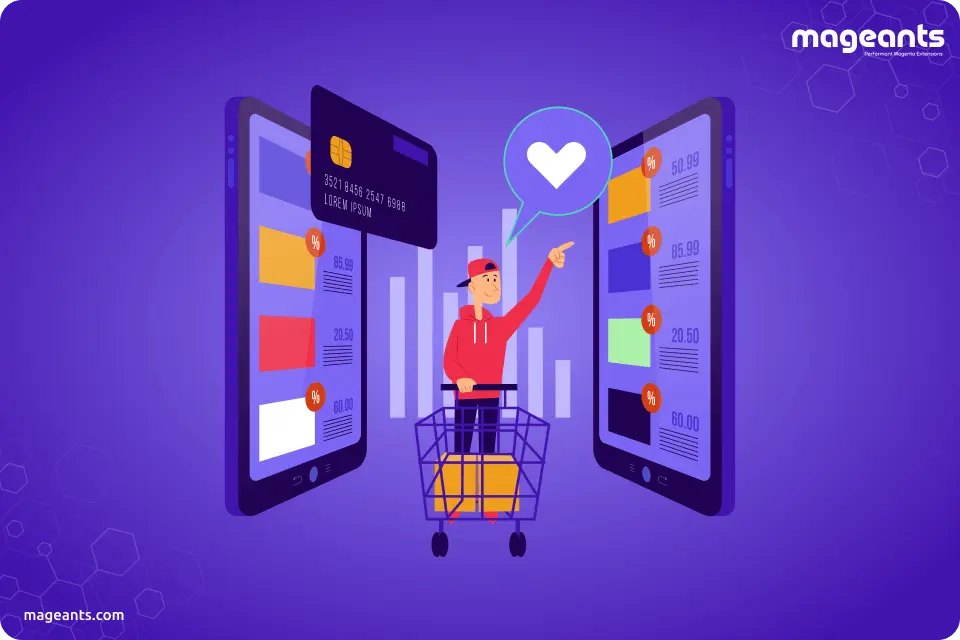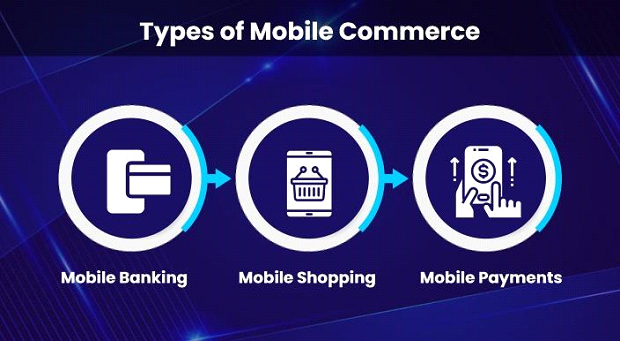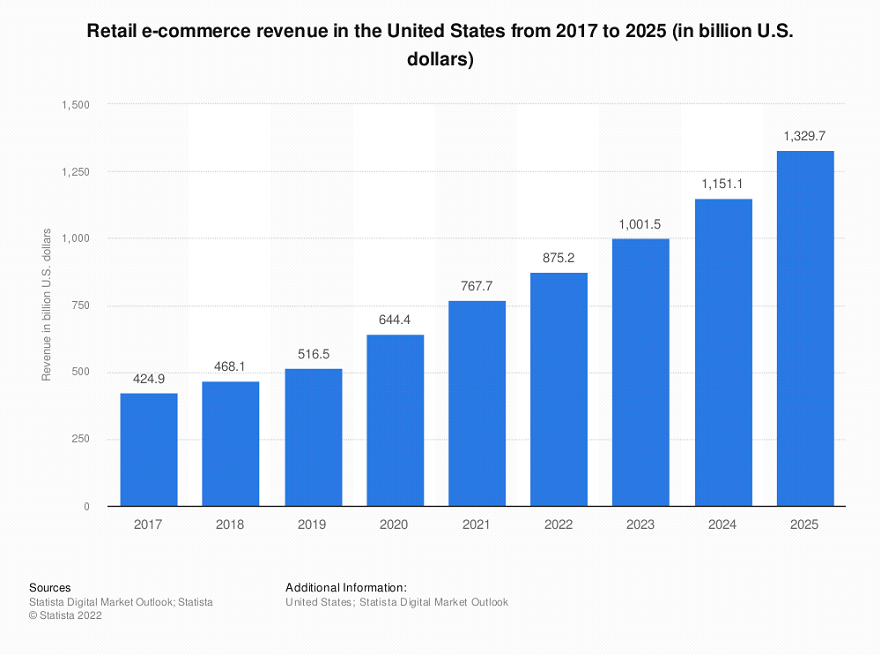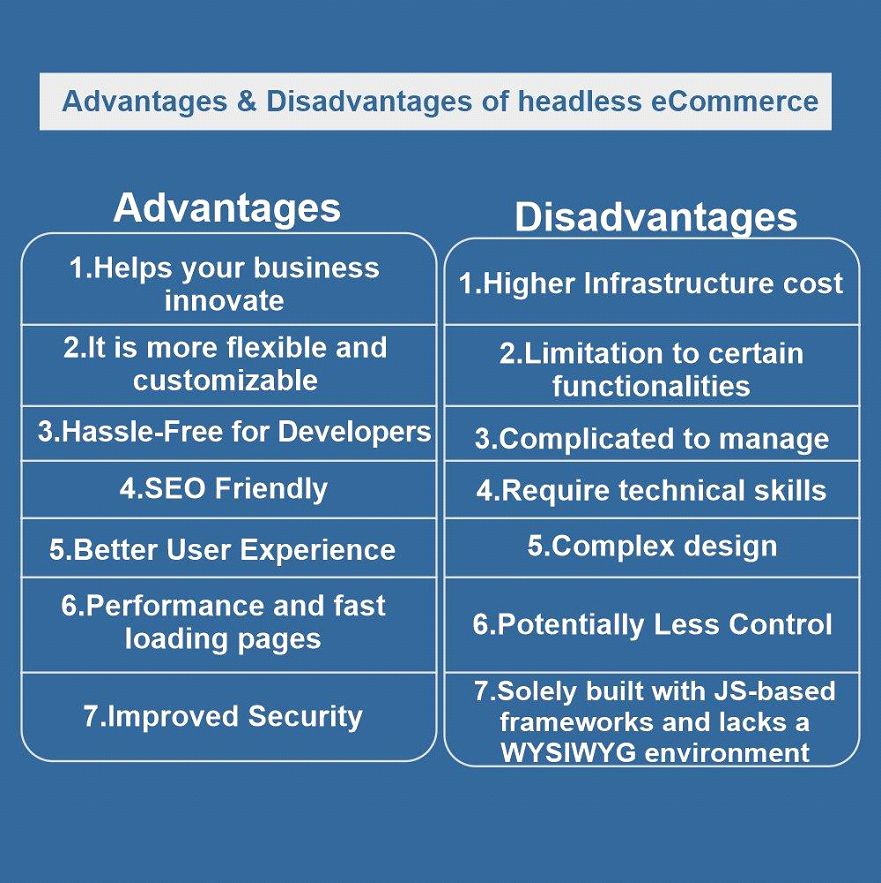
The Ultimate Guide on Mobile Commerce

Mobile commerce is no longer an idea of the future or some novelty project. The reality is, consumers are putting their hands inside their pockets or bags to make their purchases online from their smartphones, ditching desktops, and even laptops.
The surge in mobile commerce was witnessed during the pandemic, as online orders picked up significantly. As per Forbes' report, till April 21, 2020, online retail orders increased by 146 percent. Another report stated 72 percent of online consumers were using mobile devices for their purchases in 2020.
So, if you are thinking of venturing into eCommerce, it is time you think about planting your feet in the world of mobile commerce. If you are not using the mobile commerce platform, you will be losing out on possible 3 billion customers worldwide because, by 2022, that is the number of people using smartphones.
But if you feel lost about the details and where and how to start mobile commerce, this ultimate guide will help you understand all the nitty-gritty details of it all.
Before we embark on the journey of having a comprehensive idea about mobile commerce, we need to address one crucial question, what is mobile commerce?
What is Mobile Commerce (m-commerce)?
- Mobile commerce, or at times termed m-commerce, can be defined as selling and buying products or services through mobile devices. Compared to e-commerce, mobile commerce focuses on offering customers the option of making their purchases with their smartphones across several channels and platforms. These platforms can include mobile websites, mobile commerce apps, social media channels, etc.
- With the drastic increase in the ownership of smartphones and other mobile devices, m-commerce is becoming a mainstream phenomenon.
- Moreover, studies showed that in 2021 mobile commerce was projected to generate a staggering online sales value of $3.56 trillion.
- More sales are about to generate from m-commerce because people spend at least 4.2 hours on mobile apps. When 55.4 percent of mobile device users purchase something via the device, mobile commerce becomes a lucrative investment option.
- Not only are enterprises seeing the value of m-commerce, but social media channels are pushing forward this business strategy to engage people with different and integrated shopping features. Mobile commerce is beneficial to businesses because brands can offer customers a more convenient shopping experience. The platforms also have features that companies can learn about customer behaviour.
- In mobile commerce, the business can interact with the customers directly with hyper-personalized tools like chatbots, push notifications, email and SMS. It is an opportunity to engage the customers for the future and garner brand loyalty because of the availability of multiple touchpoints.
- The hyper-personalization feature in m-commerce with the omnichannel approach makes it easier to communicate with the customer across their journey with a simple device, a smartphone. As a result, the customers are always ready to pay attention to your messages and products.
How Does Mobile Commerce Works?
- Now, understanding m-commerce better is time to see how mobile commerce works. The industries using mobile commerce the most are financial services like banking. Customers use smartphones or mobile devices to pay their bills, checking accounts, and even trade stock.
- The other sectors using m-commerce as a service are telecommunication for bill payment, mobile phone recharges, checking the data pack updates, etc.
- Retail and services allow consumers to place orders and pay on the go. Similarly, information services use the platform to deliver news, statistical figures, and traffic updates via mobile devices.
- Apart from the banking operation use, m-commerce is grounded on the uses made by the merchant and the customer. Therefore, it is essential to understand the platform's perspective from both sides to know how it works.
Merchant's Use:
The merchant uses the peer-to-peer (P2P) model for the mobile commerce platform. The process allows the payments by the customers to be made to the merchant without any intermediary. However, depending on the business, the payment method, and the purchase location, a third party, can be involved in modifying the payment method.
Customer's Use:
With the m-commerce app or mobile-optimized website, the customer can browse, preview, and buy the products on the go. In addition, the features incorporated in the m-commerce apps allow the listing of products as per the customer's previous searches, enabling them to spend less time on purchases. This speeds up user conversion and improves the purchase experience.
All these are done with the mobile device being connected to a wireless network. Hence, the m-commerce developers need to take care of the KPIs, which would include the track of the total number of mobile traffics, traffic on the application, average order, value of the order, add to cart rate along with page loading time, mobile cart conversion rates and subscriptions for SMS and push notification agreement.
What are the types of Mobile Commerce?

When it comes to mobile commerce apps, one needs to be aware of the types of mobile commerce apps available. Typically, there are currently three varieties of m-commerce apps. They are:
Mobile Banking
Mobile banking comes with quite a few restrictions since it deals with sensitive data. Most banks offer their own mobile apps that are customer-centric and have certain unique features exclusive to the enterprise. Mobile banking aims to offer a seamless experience to the customers with basic transactions.
Mobile Shopping
Mobile shopping is like eCommerce/online shopping. However, the difference is that the websites are used are optimized for mobile devices. Moreover, the mobile app developed for shopping has a full marketplace for a seamless shopping experience for customers from anywhere and anytime.
Mobile Payments
The mobile commerce sector is one of the fastest-growing sectors. Many existing and new-found companies allow people to send money to another person or vendor through the app. The platform also allows the users to use the device to make a payment in person.
While these three remain the main mobile commerce varieties, with the technology evolving and mobile experience and usage increasing, many more types of m-commerce will be available soon.
What is the Future of Mobile Commerce?
As mentioned earlier, the use of m-commerce will continue to improve with the promise of better technology revolutionizing the shopping experience.

Source:- Statista
Some of the features that mobile commerce future holds are
Image Search
- One of the usages of AI in m-commerce is the option of image search. The process allows you to use your smart device camera to search for a product. With augmented reality applications or the likes of built-in features like image search, you can snap, choose and shop, thus streamlining the shopping experience.
- Artificial Intelligence (AI) is no longer a novelty idea. Instead, the reality is it is being used in almost every sector. For example, mobile commerce is implementing technology to revolutionize the shopping experience for customers.
Virtual Reality Stores
- Though the idea of whether VR headsets should become part of the m-commerce experience is still debatable and, at times, novelty ideas, many companies are using them to offer an enhanced shopping experience.
- Future VR headsets may be the companion and transform the shopping experience you have never experienced before. Currently, Ikea is offering the experience of a virtual reality store.
- But that's not all, mobile commerce comes with quite a set of advantages, and those who can use it properly can benefit immensely.
What are the Advantages and Disadvantages of Mobile Commerce?

If you are looking for reasons to use mobile commerce for your business or why you shouldn't, here is a list to make an informed decision.
Advantages of m-commerce
Mobile commerce offers four main advantages to an enterprise and its customers.
Voice Shopping
Already, 72 percent of the adults who own voice-activated devices stated that it is part of their daily routine. Hence, the rise of intelligent voice assistance will become part of the shopping experience.
Whether it is Alexa or Siri, people have started using voice search for their shopping too.
Identifying Market Trends
Mobile commerce is growing exponentially because of the convenience it offers. As a result, it is not going away anytime soon. Rather, with the rise in smartphone device usage, optimizing the business for mobile commerce is the way forward.
The in-built analytics in the apps allow you to identify the customer and the market trend, thereby providing a better customer experience.
Ubiquity
One of the unique natures of m-commerce is ubiquity. Now, brands and businesses can enter the market and connect with customers with an app. Any information is available for the users anywhere, anytime, without extra cost.
Easy Payment
Businesses can easily save hundreds of dollars for credit card terminal payments. With only barcode scanners, the payment gets easier for the customer with multiple payment gateway options and the business owner.
Disadvantages of m-commerce
While there are certain advantages of mobile commerce, it does have some drawbacks like
Lack of Personal Touch
There are chatbots and live chat software options when customers purchase online. However, it still lacks the personalized touch that a physical store brings based on the customer's previous experience and interaction. Also, a customer cannot feel and touch the items before the purchase.
Internet Connection
Progressive Web Apps (PWA) can cache web content. However, a customer cannot go through the full purchase without an internet connection. Also, there is no option of fast checkout and consulting services.
Optimizing The Website
The mobile site must be optimized and updated regularly to provide the best user experience. However, it can cost you a lot of bucks. You also have to keep the pricing dynamic and stay at the top of your competitors, which means you have to keep track of them.
Shipping
Since most m-commerce transactions happen online, the products are delivered by third-party shipping companies. However, at times the handling of the item can be a problem, like getting it misplaced or lost.
Like every sector, m-commerce has its advantages and disadvantages. It is up to the business owner as to how they want to handle and utilize the benefit of mobile commerce.
What are the Trends in E-commerce?
Mobile commerce is considered to be the same as e-commerce, only on a smaller screen. But has gained much more importance. It is coming up with new trends like:
Shoppable Videos
You no longer have to wait for the ad to end and search for the product online. Instead, the visual content and the m-commerce platform are being integrated for you to start shopping between the ad via the link provided.
Live Sale
While shoppable videos are there, brands collaborate with influencers and bloggers to offer an immersive shopping experience with live events. Products will be displayed while interacting, and shoppers can order them instantly.
Social Commerce
Brands with social media accounts can easily tag and push their products through posts for shoppers to buy directly.
What are the Challenges of E-commerce?
There are several challenges that m-commerce stores face: the lack of internet connection, small screens, security threats, constant OS updates that the mobile commerce app fails to keep up with.
Final Words
However, all these issues can be navigated with proper research and understanding of consumer behaviour. So, if you want to invest in m-commerce, the best way to move ahead is to optimize the storefront and create an application that puts the customer experience at the centres.
